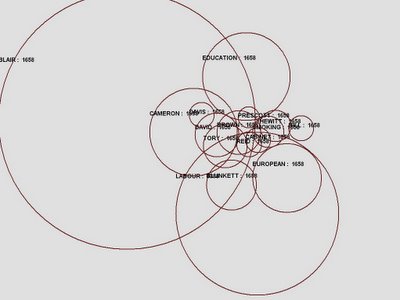 March 2006 was the tipping point for Online PR. PR' role is not as comfortable as some may believe.
March 2006 was the tipping point for Online PR. PR' role is not as comfortable as some may believe. According to The Editor's Weblog The latest figures from the UK Audit Bureau of Circulation show that every British regional paper, both morning and evening, lost paying readers in the second half of 2005.
Reports that the The Newspaper Society, sees some light in the dark numbers and claims that "websites, niche magazines and broadcast platforms, ‘Lite’ editions for commuters, podcasts, mobile phones and e-editions are all allowing people to access news and entertainment on the move, and are proving increasingly popular for regional press consumers.
We saw this month that people in the UK spend more time on-line than watching television.
This tells us that the tipping point is here and now.
The content manager at Northcliffe Electronic Publishing, Robert Hardie, said, "Readers who were previously disenfranchised for geographical or logistical reasons from buying their local paper can now access it online, and both the age and social demographics are different for the online audience than they are for the traditional newspaper-buying one.”
Communications director of the Society, Lynne Anderson feels that "Measuring circulation alone clearly no longer gives an accurate picture of a regional centre’s reach . The challenge is to develop a national method of multi-media audience measurement which provides more meaningful figures for advertisers and agencies." This suggests that PR media planners and the PR Evaluationsist have a problem. Apparently evaluation reach numbers are now suspect! Circulation is not king. The engaged readers is more powerful and more committed. An engaged reader not going to believe a BuzzAgent? The person who is intruding and getting in the way of what 'I' want to find out'. In the networked community, this is a receipt for market oblivion.
The Big Gorilla announcement that News International is working hard at developing its on-line presence is really important. It says that on-line is now top priority for PR. According to The Economist, Murdock's News Corporation spent more than a billion dollars buying barely profitable internet companies. He did not do this for nothing.
“The debate is one of the side-effects of the digital revolution in which the dinosaurs must adapt or die. As one of the biggest beasts, ITV has already swallowed up a new competitor, the Friends Reunited website,” commented Jennifer Cunningham in the Herald noted this week.
The BBC which is no slouch when it comes to bridging the gap between traditional and on-line media, has signed up Dan Gillmore to explain the development of citizen media.
Georgina Harvey, managing director of Trinity Mirror's regional titles, said: "Trinity Mirror is rapidly becoming a multi-platform publisher.
This on-line presence must now open up new PR jobs to assist in influencing the changing face of PR with all these new communications channels opening up so fast. Press relations is no longer enough.
The future of Public Relations is no longer in print. In fact, it is no longer about narrow definitions of stakeholders or publics, such approaches need robust methodologies to succeed and PR has to work at a more profound level.
This new world is much more to do with social frames and understanding the nature of organisations. It needs these tools to help us use the language, content in context and appropriate communication channels. The 'long conversation (durring which the organisation may sell something) is now critical to relationship creation, building and management. The power curve militates against artificial WOM. People just don't believe plugs, spin, advertising and all the rest of the mantra you hear from the marketing and advertising industry based on OTS.
This brave new cultural world is a different form of PR. It includes the traditional techniques but to make them work needs not just and overlay of digital icing. PR practice now needs digital PR in the DNA of practice.
Hurry up! Hurry up! We don't have all minute.
Picture: Classic pics and art




















